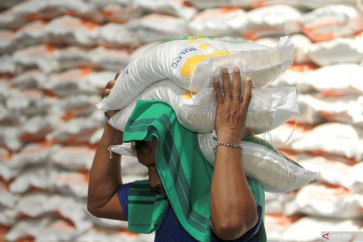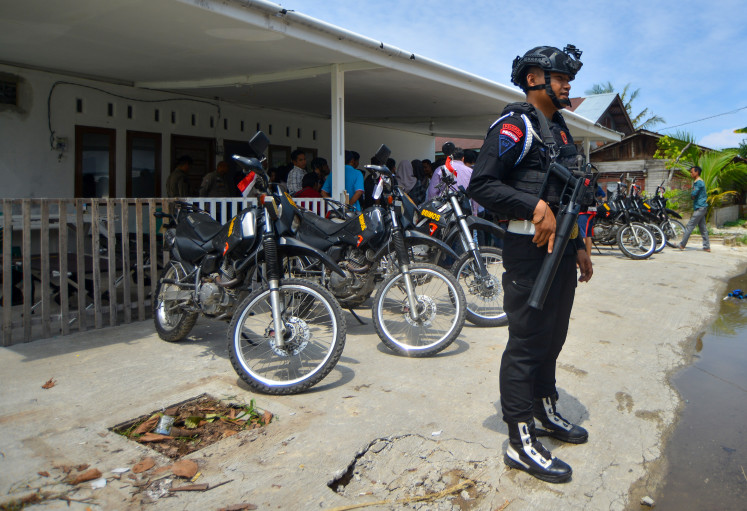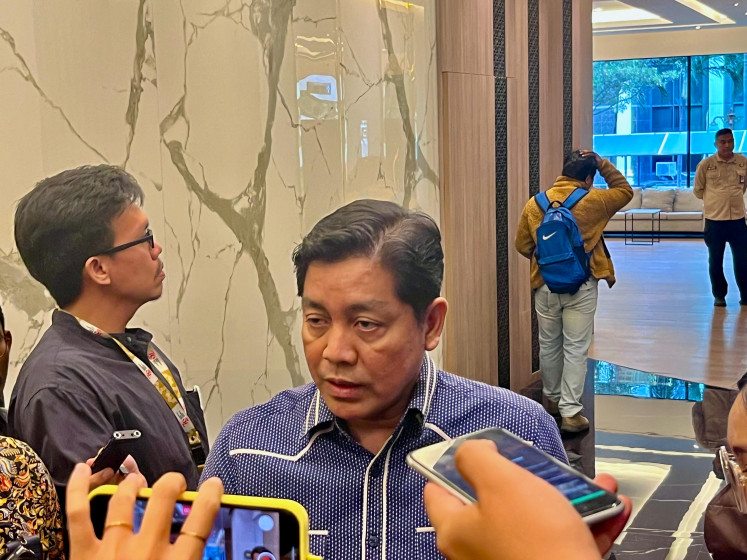Popular Reads
Top Results
Can't find what you're looking for?
View all search resultsPopular Reads
Top Results
Can't find what you're looking for?
View all search resultsLetter: Fauzi should revise the spatial plan
Governor Fauzi Bowo has highlighted Jakarta’s spatial plan for 2030
Change text size
Gift Premium Articles
to Anyone
G
overnor Fauzi Bowo has highlighted Jakarta’s spatial plan for 2030. To cope with a burgeoning population his administration has proposed to expand housing, focusing on high-rise buildings.
In facing climate change challenges, the government plans to restore the function of southern Jakarta as a catchment area to prevent floods.
But why doesn’t Fauzi also make plans for northern Jakarta, where the coastline is — the area most vulnerable to climate change? The governor seems to have prioritized economic challenges related to globalization and liberalization, by preserving the industrial zone of PT (Persero) Kawasan Berikat Nusantara (KBN), which is expanding to become a Special Economic Zone (SEZ) under Law no. 39/ 2009.
Defining Marunda as a SEZ is parallel to the SBY administration’s move to pursue economic growth focusing on foreign investment.
According to Raharjo Arjosiswoyo, the director of PT. KBN, the Marunda SEZ will improve facilities and make breakthroughs in aims to meet the business needs of investors there, ranging from industrial areas to warehousing, an office complex, hospitals, public facilities and a harbor.
PT KBN was established during the Soeharto era, based on the governmental regulation no.23/1986 and subsequent regulations, to manage an integrated industrial area covering Marunda, Cakung and Tanjung Priok, bound to function as an Export Processing Zone (EPZ). In this area is around 118 factories, 80 percent of which produce garments, which are predominantly run by investors from Taiwan, China, Singapore and South Korea (Kompas, 2008).
However, something that was never considered during the Soeharto era has begun happening in recent years. The ground level is sinking and sea levels are rising, and seawater intrusion seems to have contributed to the fragility of road structures in northern Jakarta. The collapse of Jl. RE Martadinata last year should have warned the government of the risks of developing a large-scale infrastructure complex in this area.
The ultimate weapon to address all the seawater intrusion, land corrosion and subsidence issues is to restore the mangrove barricades along the northern coast. The government should preserve Jakarta’s marine ecosystems, protecting them against industrial waste mismanagement and sustaining their biodiversity.
Unfortunately, instead of revitalizing and rehabilitating mangrove forests and preserving coastal areas, the government has plans to enclose this vital coast with infrastructural assets to meet an ASEAN globalization and liberalization agenda.
The provincial plan is market-oriented, responding only to economic demands, without considering Jakarta’s heaven and earth capacity to bear all the infrastructural constructions, groundwater, clean water and electricity demands that will go along with the flourishing economic activities.
When the nature can’t sustain macro development endeavors, there will be no space and time for us to enjoy what we have developed. So the issue is not which side the Supreme Court chooses. Jakarta is threatened by factual ecological phenomena demanding the Fauzi Bowo expert team to retreat and redesign the 2030 Jakarta Spatial Plan for the sake of sustainability.
Lim Mei Ming
Jakarta










